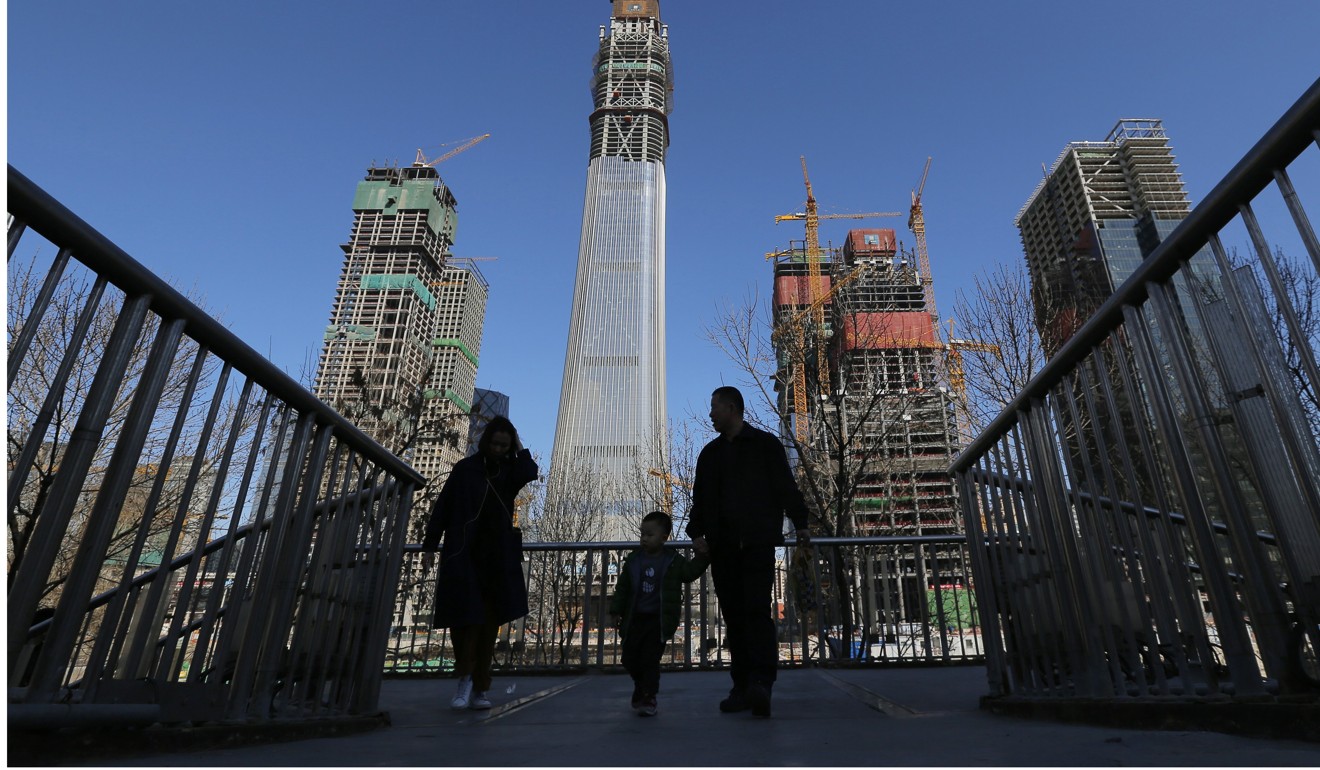
Beijing’s skyscraper arms race cut short thanks to new CBD height restrictions

Beijing authorities have set height limits on new buildings in the central business district in a bid to curb density, forcing a number of office projects to head back to the drawing board.
Eight office tower proposals in the core CBD, known as Guomao, will need to resubmit designs that radically reduce their floor count based on the new height restrictions, according to JLL’s Beijing branch.
Michael Zhang, associate director of office at JLL North China, said the reduction in office space resulting from the loss of floor count may range between 10 to 30 per cent.
“Because of the curbs, a slew of projects, previously expected to come to market by 2020, will be delayed. This could exacerbate the short supply in the core CBD area and push up rents,” Zhang said.
Property consultancy firm CBRE also confirmed the cap when contacted by the Post.
JLL said the height limit has been capped at no more than 180 metres. Previously, developers would consult the CBD Managing Committee, which sets zoning restrictions in the most prosperous district of Beijing, on height restrictions on a case-by-case basis.
Future office buildings in the area are expected to range from 100 to 200 metres in height, according to CBRE. The affected buildings were originally planned to be 190 to more than 300 metres, the consultancy said.
By comparison, China Zun, a landmark 108-storey building taking shape in the CBD as the future headquarters of CITIC Group, boasts a height of 528 metres. Zhengda Centre, another skyscraper that is about to finish construction, is 238 metres.
The CBD Managing Committee did not reply to written inquiries sent by the Post.
The height cap is the latest effort to restrict density under the Beijing City Overall Plan (2016-2035), which was published in September 2017.
The plan was developed with the goal of limiting the size of Beijing, both in geographical and demographic terms.

Although the plan is geared towards general policy, it also specifies a targeted downtown population reduction of 15 per cent to 10.85 million. Several follow-up plans are expected to be issued in the near future.
In late March, Beijing specified no land within the city’s fourth ring road, the core downtown area, can be transferred from commercial to residential development.
Eric Wang, executive director at CBRE Northern China, said because of the height cap, owners of the affected buildings would have to rethink their projects and their impact on surrounding amenities.
The land plots, south of the China Zun and east of East Third Ring road, were bought by several consortiums back in 2010. One is owned by Sino-Ocean Group Holding and HSBC Holdings, a second by CICC, Vantone Group and Hongkong Land, a third by China Minsheng Bank, and the rest by Anbang Insurance Group and co-investors.